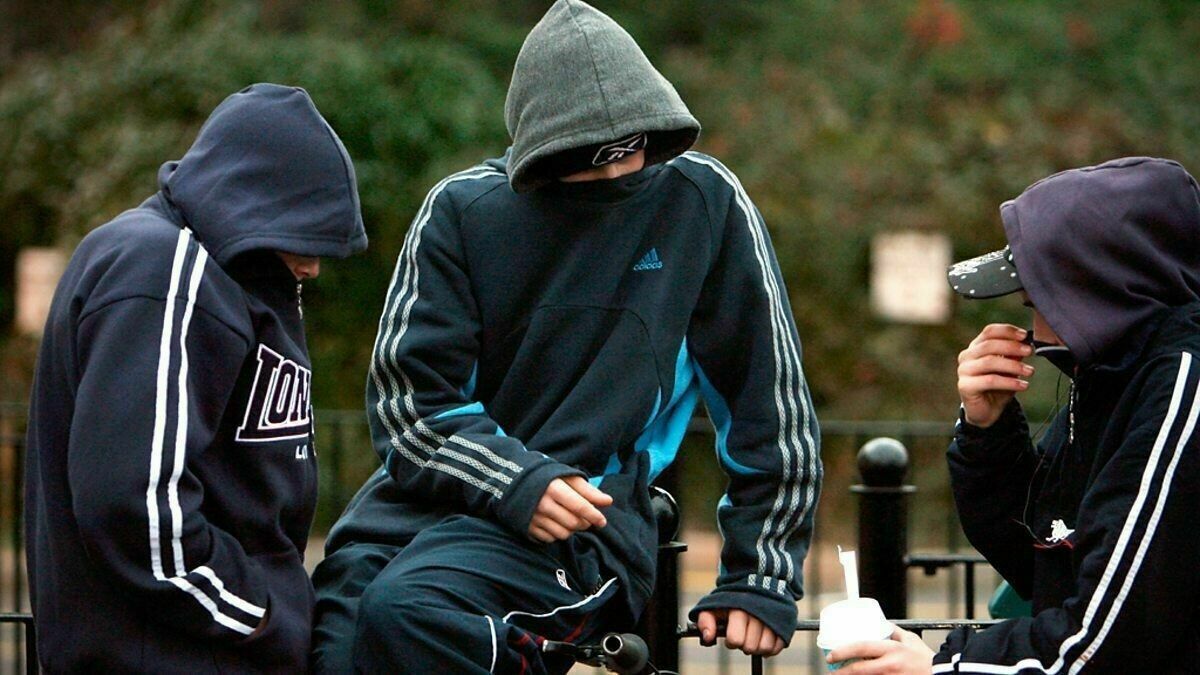Posted 28 февраля 2023, 07:11
Published 28 февраля 2023, 07:11
Modified 28 февраля 2023, 07:57
Updated 28 февраля 2023, 07:57

The Lost generation: street crime is getting younger and returning to the level of the 1990s
During the holidays, the Russian police had to work hard. Raids were carried out in large cities to identify and suppress the activities of youth groups whose members committed hooliganism in public places. According to these facts, several criminal cases have been initiated, the issue of placing hooligans on preventive registration is being resolved. The head of the Law Enforcement Center in Moscow and the Moscow region, Alexander Khaminsky, spoke about the possible consequences of the development of unruly youth movements.
The main problem is that the growth of children's and youth movements occurs much faster than information about them is received by law enforcement agencies and receives an appropriate assessment. This is influenced, among other things, by established stereotypes. Previously, we only knew about such informal communities as quite harmless hippies or almost harmless punks or much more aggressive skinheads and football fans. Their party was in plain sight, they had adult recognized leaders with whom it was possible to come to at least informal agreements on compliance with certain social rules. But with the development of the Internet, the average age of informals has significantly decreased, closed channels of information dissemination have become available, which has become one of the reasons for the emergence of such dangerous groups as AUE and the Blue Whale (extremist organizations banned in the Russian Federation).
A generation ago, in any district department of internal affairs, the district police officer knew many difficult teenagers by sight, information about them was received in the police children's rooms. It was possible to conduct preventive conversations with both children and their parents. Today, members of the same group can live in opposite places of the city, and in order to cover them with prevention, district commissioners from several dozen regional departments will be needed. In addition, the measures of coercion and inducement against minors are such that for every careless step in their direction, the inspector can receive a penalty.
What are the dangers of informal youth movements other than fights and hooligan antics in the subway and shopping malls? The fact is that at the age of 10-16, the foundations of future adult behavior are laid. Rituals adopted among representatives of various subcultures take quite a lot of time, which will almost always be taken away from studying, communicating with "ordinary" teenagers, attending cultural events. The issue of recognition in a close social environment is in the first place and in this case subcultural mantras replace traditional values.
In recent cases, including in the Aviapark shopping center, teenagers justified their aggressive actions by protecting the right to wear their favorite clothes, watch their favorite cartoons and imitate their heroes. But this, ultimately, will lead to a sense of self-rightness under any circumstances, and then exclusivity. This is how the ideology of National Socialism was born in Europe in the 20-30 years of the last century.
Another problem is the mass nature of the phenomenon. Today there are a lot of different currents, groups and groupings. There is a risk that at some point the entire staff of the police may not be enough to hold the situation. At the same time, reducing the age of the participants of the actions to 14 years and younger has its negative consequences. A 13-year-old accelerator who committed a hooligan prank is not subject to criminal prosecution as he has not reached the appropriate age. Such impunity generates permissiveness, which can easily return street crime to the level of the "dashing 90s" only with a focus on children and adolescents.
So that the current students do not become another "lost generation", they will have to work hard. And only prevention can help in this. At the same time, it will definitely not be possible to solve the problem by order. The only tool in this case is the interaction of family and school, guardianship authorities and law enforcement. As it was some 40-50 years ago. And if we talk about the modern information environment, then it is definitely impossible to do without the support of electronic media now.